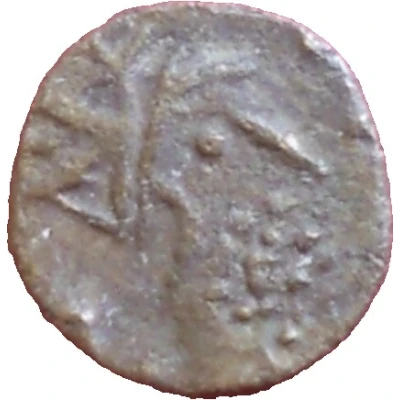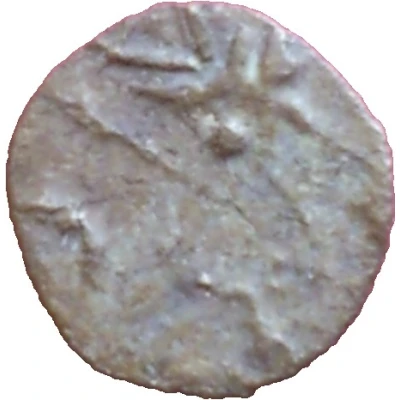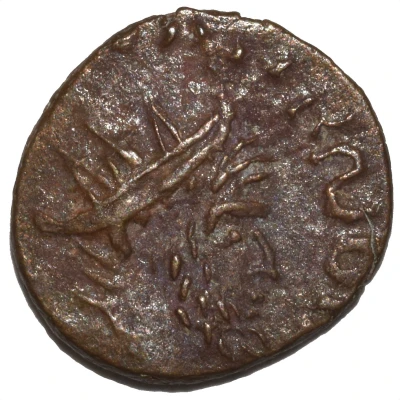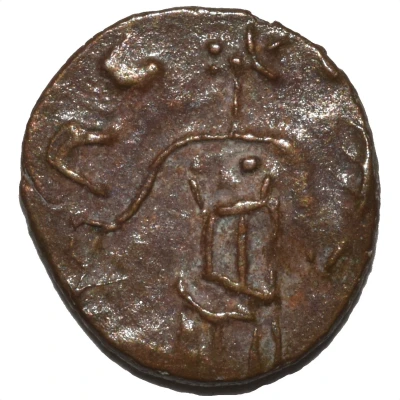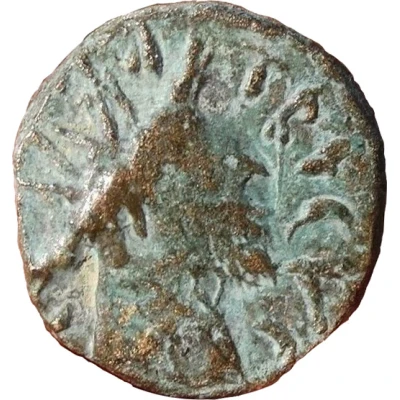
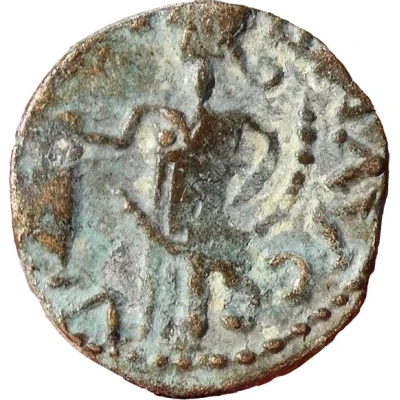

Antoninianus, imitation - Tetricus I VIRTVS AVG
| Bronze | 2 g | 14 mm |
| Issuer | Uncertain barbarous city (Rome) |
|---|---|
| Type | Standard circulation coin |
| Years | 271-274 |
| Value | Antoninianus (1) |
| Currency | Antoninianus (260-274) |
| Composition | Bronze |
| Weight | 2 g |
| Diameter | 14 mm |
| Shape | Round (irregular) |
| Technique | Hammered |
| Orientation | Medal alignment ↑↑ |
| Demonetized | Yes |
| Updated | 2024-10-04 |
| Numista | N#143567 |
|---|---|
| Rarity index | 94% |
Reverse
Virtus standing left, leaning on shield and holding spear
Script: Latin
Lettering: VIRTVS AVGG
Comment
Barbarous Radiate, imitating Tetricus I 271 - 274 AD circa late 3rd century to AD-5th century AD."Barbarous radiates" are very common in hoards of the later Gallic Empire.
While first believed to be an imitative money used by the tribes along the Rhine borderlands,
they are now believed to possibly be officially-sanctioned coinage minted locally, akin to the "limes denarii" of the Severan period.
Interesting fact
One interesting fact about this coin is that it is an imitation of a Roman Antoninianus, which was a coin used during the Roman Empire. The imitation coin was made in a barbarous city, which is a city that was not part of the Roman Empire, and it was made of bronze, which was a common material used for coins during that time. Despite being an imitation, it still features the image of Tetricus I, who was a Roman Emperor, and the inscription "VIRTVS AVG" which means "The virtue of the emperor". This coin is a great example of how currency and art were used to convey power and influence, even beyond the borders of the Roman Empire.
